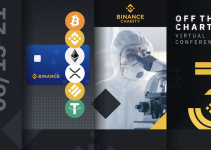Table of Contents

In the fast-evolving landscape of blockchain technology, early-stage projects face a unique set of challenges. One critical aspect that can make or break the future of these projects is the design of tokenomics. Tokenomics encompasses the economic principles and incentives that govern the issuance, distribution, and use of tokens within a blockchain ecosystem.
Once projects have established their tokenomics, the next question is: what is the strategy for the token launch, and when should projects engage with trading firms?
As part of the MVB VI curriculum, we invited David Shuttleworth, Tokenomics Director at Binance Labs, and Moshe Shen, Business Development & Partnerships Director at Wintermute, to dive into designing tokenomics for a crypto bear, and the role trading firms play for blockchain projects.
Let’s talk about tokenomics design
As an early-stage project preparing for a token launch, there are 3 core fundamentals you should consider: token allocations, incentive mechanisms, and how to approach your token launch.
Token Allocation Best Practices for Protocol Success
- Insider vs. Public Allocation – When designing token allocations, it’s important to balance insider and public allocations. Insiders – core team members, advisors,, and strategic investors – may invest for speculative purposes, while the public may speculate but also have a genuine interest in utilizing the product. Finding the right mix ensures that speculative investors and genuine users contribute to the protocol’s success.
- Short vs. Long-Term Lockups – For the team to have a long-term commitment to build, consider implementing longer lockup periods. By aligning the team with extended vesting periods, the core team has a stronger incentive to stay and grow with the protocol. This fosters sustained development as the protocol matures.
- Ecosystem Growth – The best tech doesn’t always win; sometimes, it’s required to subsidize growth and usership. Careful allocation of funds can be used to strategically attract users and integrate your product with others in the space. Additionally, offering grants to incentivize product development on the protocol can help strengthen the overall ecosystem.
- Market Volatility – When launching a protocol, market volatility can pose challenges. Creating best practices for token allocations in the first 6 to 18 months of launch is important to mitigate this. You can expect secondary market selling in the early stages, but it’s important to enable the protocol to grow organically and minimize the impact of market volatility. Long-term lockups for insiders become particularly important as they prevent high-volume selling that could accelerate market volatility.
Designing token economics for Web3 protocols is complex and requires careful consideration of various factors. While there is no silver bullet, taking into account the key factors discussed above early on, protocols can increase their chances of optimizing token allocations for long-term success.
For further insights into incentive mechanisms and approaches to token launches from David Shuttleworth, Tokenomics Director at Binance Labs, we’ve made the MVB VI tokenomics session available. Check out the video below!
Watch the full MVB VI session on tokenomics
The Role of trading firms
Engaging with trading firms can add value with increased liquidity, improved price discovery, and market efficiency. Trading firms are algorithmic trading, risk management, and market infrastructure experts. By establishing strong partnerships with trading firms, blockchain protocols can create a thriving ecosystem that attracts diverse market participants.
Moshe Shen, Business Development & Partnerships Director at Wintermute, shared some considerations with the MVB VI cohort when engaging with trading firms.
- Product & Community Traction – Have you done pre-launch marketing? What does your user traction look like, and what’s the current market condition?
- Listing VS Users – What’s the geographical split of the exchanges you’re listing on? How does that line up with the current users you have?
- Token Demand – What’s the demand like for your token? Why would a user buy or sell your token in the open market?
- Token Value – What’s the value of your product when it’s translated into tokens? How does the value of your tokens accrue?
- Cost Considerations – What’s the cost of listing various venues? Think regulatory & reputational. What are the listing fees and value-added services from an exchange?
- Trading Firm Structure – What structure do they have to help price liquidity? Do they offer a retainer model or a call options model?
Consider trading firms as another investor in your project. How you pitch your project should be similar to how you would to VCs. Trading firms prioritize longevity, runway, social validation, user activities, use cases, security, and the product solution roadmap. They dedicate time and resources, often trading tokens for months, to build trust and relationships with projects.
Your tokenomics and token utility are important, but understanding the different types of structures and listing requirements is needed. The process is not straightforward, and the go-to-market strategy is not meant to be simple – it involves multiple processes similar to taking a company public. There are many hurdles, but it acts as a filter for projects that have completed the necessary due diligence and are ready to be listed.
Get a glimpse of the most promising projects building on the BNB Chain
MVB VI Demo Day lets investors glimpse the industry’s most promising early-stage projects. We’re thrilled to announce that Demo Day for this season’s Most Valuable Builder accelerator program will occur on Wednesday, 28th June @ 18:00 PDT / Thursday, June 29th @ 09:00 SGT.
Register for MVB VI Demo Day here
The Most Valuable Builder (MVB) is an 11-week accelerator program focused on helping emerging projects reach their full potential through in-depth sessions with industry experts, and technical advice to onboard and scale on the BNB Chain with a product that reaches product-market fit.
Follow Binance Labs on Twitter and LinkedIn to stay updated with the latest news!


